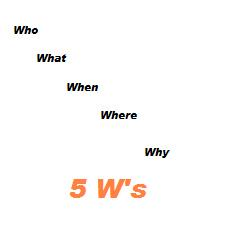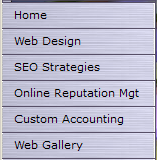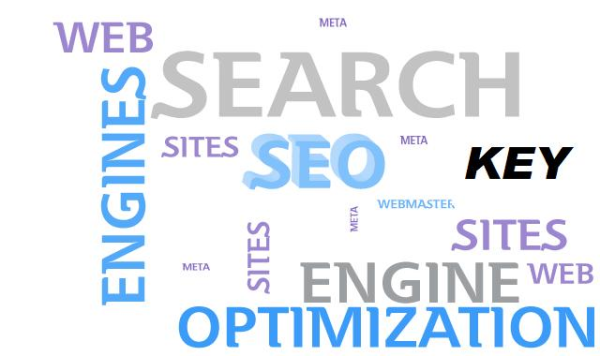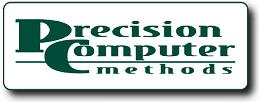In the past several weeks, we have covered the content requirements in order to develop your website as an authority in your field. While this makes sense, sometimes it is difficult to get a handle on how to approach this task of creating perfect content that is appealing to your viewers and at the same time, attractive to the search engines. As a suggestion for organizing your thoughts about content, think of the 5 W's: Who, What, When, Where, Why. When you can answer the 5 W questions, you have covered your content needs. Let's look at the 5 W's individually.
____________________________________________________________
Peter Heinicke
Recent Posts
Tags: SEO | organic search | Paid Search, Inbound Marketing, 5 W's, SEO, Search Engine Optimatization, SERP, SEO Authority, Content based Marketing
As you review your website for the attention the search engines will give it and for its authority content, you need to determine if you have a clear call to action. A call to action on your website simply asks your viewer to do something. Are you asking the surfer to call you, to buy your product, to engage your services or simply to subscribe to your future communications? Think carefully about what you want next from your website visitors. This is your call to action (CTA). The purpose of a CTA is to create another contact point for your potential customer. It takes seven encounters on average before your prospect becomes a customer. If you don't ask or create a clear opportunity for your viewer to create a relationship with you and your business, you may not get your additional six contacts for the sale. Beyond the initial sale, you will want to set up an ongoing relationship with your customer. Business is not built on one sale, but on a continuous business relationship where you customer becomes a return purchaser. To build this loyalty, you must continue to place your name and image in front of your customer. Think of it this way: you spend most of your marketing efforts and dollars to get that first customer. When your customer returns for another purchase, you aren't spending much more in follow-up dollars. With techniques we are going to cover in future SEO SOS lessons, you will see that this cost is minimal and, therefore, yields the greatest return on your marketing dollar. Some examples of CTAs might be:
Tags: SEO, Website Traffic, Search Engine Optimatization, SERP, Website Navigation
- Provide relevant and substantial content. We have already discussed how content is King and keywords are the Queens. Just throwing keywords at a page without thoughtful content may get people to your site as a result of a keyword search; however, if your page visitor doesn’t find something of value at that website, they will leave as quickly as they came. And if they clicked on one of your Google AdWords ads, you have just paid for that useless visit with nothing to show for it.
- Google also suggests:
The page should contain information that is useful and accurate about the product or services searched. - If your landing page is not relevant to the keyword searched, it will be viewed as a waste of time and the viewer will flash away hoping to find what they want on someone else’s page.
- Provide information that is relevant and useful before you require them to subscribe or register. If the pre-register content has value, they will be eager to register to get more. Lay those crumbs out there clearly on the path to commitment to your site. After all, asking a viewer to register or subscribe isn’t really free. The price is their name and email address.
- Keep your ads, banners and affiliate links to a normal non-overloaded minimum. When a viewer arrives at a page filled with loads of ads and little content, off they scamper. You see, “It’s all about me,” the viewer says. The viewer isn’t arriving at your website with the intention of making you money, but to find answers to their questions or solutions to their problems. Don’t saturate them with ads.
- Your content must be unique. If your page mirrors 100 other web pages on the Internet, why would someone choose you over the others or ever consider you an authority? The importance of this non-mirrored content has to be handled delicately if you write and publish articles. [More on this topic in a later lesson.]
- Avoid misleading your visitors by providing exactly what you ad stated. No loss-leaders here. That tactic may work at a grocery store, but it can keep people from ever coming back to your website.
- Honor your deals and deliver as promised. In fact, the most successful businesses, either online or offline, make their offer, then over-deliver. Think in terms of delivering over and above what you offer and you will distinguish your business in the eyes of your customers. They will come back again and again. Remember, the first sale is not the business-building sale. It is the second, the third and fourth sales that make your business a success.
- Treat your customers well by protecting their information responsibly. Just as you would want your personal information managed correctly, so should you be able to insure that your privacy policy is clearly stated, and more importantly, clearly followed. Google’s guidelines seem to be reflective of common sense, yet too many web owners forget these details and send up either abusing or neglecting that ever-important component to their business: the customer.
Tags: targetted Marketing, Inbound Marketing, Website Traffic, Web Optimization, Elburn SEO
We have now captured the attention of our viewer by telling them clearly the benefits of what we offer. They like what they see and they want more. How you present that "more" is very important to keeping your visitor around long enough to respond to your Call to Action (more on Call to Action in a later lesson). Think of a website navigation scheme as a pyramid where the information offered is more specific and succinct at the top of the pyramid and becomes broader and deeper as you delve further into the website. The information is more complete and offers a greater explanation of the topic pursued as you go further down the pyramid and deeper in the navigation. This allows the visitor to decide how much they want to pursue, rather than having to slog through too much or more information than they want too soon. Most newspaper articles and press releases are written like this.
Tags: Inbound Marketing, Website Traffic, Website Navigation, Web Optimization
Your Website's First Impression - SEO SOS #5
Posted by Peter Heinicke on Sun, Jun 17, 2012 @ 11:15 PM
We have focused on keywords for positioning and for content in past lessons. Now we need to look at traffic generation soon. But first, let's consider what a visitor sees when they do arrive at your site. Does your site convey authority on its topic? Does it get to the point of what you do and what you offer right away? Is the navigation logical and easy to understand? Yes, we want traffic; but we want that traffic to stick around, too. Your web statistics will show where a viewer enters your website, where they exit and how long they stay. So you will be able to easily determine the success of how well-like your website it. We'll cover more on web stats in a later SEO SOS lesson. Two things are of paramount importance in your web design: 1) The first impression you make, and 2) The navigation style you use. Let's explore first impressions of a website in this lesson. We've all heard the expression, "You only get one chance to make a first impression." With the breadth and depth of the Internet, this statement couldn't be more important. Factors that impact how well your website is received include:
Tags: SEO, Web traffic, Website Traffic, SERP, SEO Authority, Web Optimization
Using Image Tags to Embed Keywords - SEO SOS #4
Posted by Peter Heinicke on Wed, Jun 13, 2012 @ 09:43 PM
Sometimes it is difficult to find ways to add keywords to your content without the copy sounding completely phoney. The goal is from 2% to 7% keyword density and while it is not always easy to find ways of using those keywords, there is a technique you may not be aware of using the keyword ALT tag. When you place an image in your HTML code, one of the parameters that can be added is called the ALT tag. This tag is simply a place in the image tag to put a description, name or title related to the image. It does not show unless you have a browser that show ALT tags when you hover over the image with the mouse. Another time you may see this text is when the image is loading. But the search engines do see this text description and will index it to help you gain keyword recognition for the website. This technique is more effective if you vary the ALT tag content so it is not just a repetition of the same keyword or keyword phrase over and over.
Tags: SEO | organic search | Paid Search, Website Traffic, Search Engine Optimatization, SEO Authority







